#Fresh herbs in india
Explore tagged Tumblr posts
Text
Hydroponic Vegetables Online in Delhi NCR | Inhydrogreens

Hydroponically grown vegetables retain their freshness and flavor for much longer. This means that when you buy Hydroponic vegetables online, such as leafy vegetables in Delhi, or buy herbs online, they stay fresh for longer periods of time and don’t need to be used immediately. Moreover, this makes them ideal for a monthly salad subscription in Delhi, as you can be sure that your produce will stay fresh throughout the entire month.
#Salad box online#Hydroponic Salad Box Online#Salad box near me#Fresh salad box#Leafy greens in india#Leafy Greens Salad Box#Leafy Green Basket#Best leafy greens#Fresh herbs in india#Microgreen salad near me#Buy microgreens#Fresh herbs vegetable#lExotic veggies online#Exotic Vegetable Basket#Exotic vegetables in india
0 notes
Text
ASIAN RECIPE
Asian recipes are renowned for their diverse flavors, vibrant colors, and rich cultural heritage. From the fragrant curries of India to the delicate sushi of Japan, Asian cuisine offers a delightful array of tastes that captivate the senses. The use of fresh herbs, spices, and a harmonious blend of sweet, sour, salty, and umami flavors defines the essence of Asian cooking. Each region boasts its unique culinary traditions, with staple ingredients like rice, noodles, and tofu taking center stage in many dishes.
#Asian recipes are renowned for their diverse flavors#vibrant colors#and rich cultural heritage. From the fragrant curries of India to the delicate sushi of Japan#Asian cuisine offers a delightful array of tastes that captivate the senses. The use of fresh herbs#spices#and a harmonious blend of sweet#salty#and umami flavors defines the essence of Asian cooking. Each region boasts its unique culinary traditions#with staple ingredients like rice#noodles#and tofu taking center stage in many dishes. Whether it’s the fiery Sichuan dishes of China#the aromatic coconut-based curries of
2 notes
·
View notes
Text
Simple Ward Against Spirits (and Other Varieties)

Forbidden peanut butter cookies
I've been very much enjoying working with a new style of ward. It's pertinent materia magica blended into air-dry clay, worked into small disks stamped with protective symbols, and hung up near doors and windows (or carried).
Sometimes I paint them; this time I just filled in the symbols with India ink.
The recipe is quite nice as you can make several little wards for the effort of one spell. And they work up pretty quickly.
The recipe:
3 substances aligning with intent (sets given below)
A small handful of air-dry clay
Paint or ink to decorate, as desired
Thread or cord to hang up, if desired
Clear-dry glue (modge-podge used in picture) to seal clay, especially helpful to block strong-smelling herbs
Steps:
Work over each substance individually to ensure they are carriers of power. Ensure each substance is empowered and aligned with its duties before moving on.
Blend all three substances into some air-dry clay (the clay itself is not worked with as a correspondence, but could be, if you're into it).
Divide the air-dry clay into individual balls and flatten them out into disks. You may have to add plenty of extra water to counteract the dehydrating effect of salt or herbs.
Poke a hole at the top of each disk (I used the back end of a matchstick) if you want to hang them up.
On one side of the disk, carve or paint any protective symbol pertinent to your faith. Pictured, an equilateral cross.
On the other side of the disk, carve or paint a symbol that expresses the specific sort of protection you're working (such as a very simplified sigil, or perhaps elemental or planetary signs you're calling on, or a minimalist animal, and so forth).
Once the clay is dry, coat with a clear layer of glue or modge-podge. This helps protect against moisture and minor chips but primarily is to stop the charm from having a strong odor if you use, say, garlic and dill.
Combinations of Materia:
Use perhaps an eighth of a teaspoon of each to start with; I find the clay can hold a lot of foreign materials, but expect it to significantly change texture and dry out. Of course, use any materials you prefer.
Use only dried herbs. Fresh will not do.
Against Evil
Dill (to perceive, forewarn, and shelter against against evil)
Garlic (to protect against evil)
Salt (to neutralize evil)
Against Unwanted Spirits
Garlic (to protect against the uninvited)
Red pepper (to set boundaries against the uninvited)
Basil (to guard against transgressors)
Against Unwanted Energies
Rosemary (to shield and shelter)
Clove (to create a barrier that limits energies)
Salt (to neutralize unwanted energies)
Notes:
The spell can "end" at any number of moments; you can seal it once you mark symbols, or only after it's dried and painted, or only after you've done knot magic to weave a special hanger, etc.
IME, a very powerful set of wards can be made by linking 4 such disks, each one to a different element, and hanging them in the cardinal directions as your path specifies; thus assigning an elemental guardian working in tandem with his brothers to guard those roads of egress. Try making a base formula shared between all four disks, and then adding a unique ingredient to each one of them that corresponds with the element.
Air-dry clay is fragile. These wards are not especially suited to be carried around, but can be carried in a pinch. If you like, the idea of a ward breaking when it's done it's job is very applicable to brittle clay disks.
You can work greater magic into them; knot magic for the hanger, earth magic for the clay, layering on more power if you paint, and so forth.
206 notes
·
View notes
Text
Saving this for me. Items possibly targeted for tariffs.
Saving this for me. Items possibly targeted for tariffs. • Bananas, Mangoes, and Pineapples (from Central and South America) • Avocados (from Mexico) • Citrus fruits like oranges and lemons (from Mexico and Spain) • Berries (e.g., strawberries, blueberries) (from Mexico, Chile) • Tomatoes, Bell Peppers, and Cucumbers (from Mexico and Canada) • Asparagus (from Peru and Mexico) Seafood (Fresh, Frozen, and Canned) • Fresh/Frozen Shrimp (from Thailand, India, Ecuador) • Salmon (from Norway, Chile) • Tilapia (from China) • Tuna (canned) (from Thailand, the Philippines) • Sardines (from Portugal, Morocco) • Mackerel (canned) (from Japan, Norway) Grains and Legumes • Rice (from Thailand, India, Vietnam) • Quinoa (from Peru and Bolivia) • Chickpeas and Lentils (from Canada, India) Nuts and Seeds • Cashews (from Vietnam and India) • Brazil Nuts (from Bolivia, Brazil) • Almonds (from Spain, Australia) • Chia Seeds (from Mexico and Argentina) Dairy Products • Cheese varieties like Parmesan, Gouda, Feta (from Italy, Netherlands, Greece) • Butter (from Ireland, New Zealand) • Yogurt (Greek-style from Greece, other varieties from Europe) Canned Foods and Packaged Items • Tomato paste and puree (from Italy) • Canned olives and olive oil (from Spain, Italy, Greece) • Canned coconut milk (from Thailand) • Canned beans (from Mexico, Central America) • Canned corn (from Canada, Brazil) • Canned anchovies and sardines (from Morocco, Portugal) • Canned fruit (e.g., pineapple, mango, peaches) (from Thailand, Philippines, Mexico) • Canned tuna and salmon (from Thailand, the Philippines, Chile) Spices and Herbs • Vanilla (from Madagascar) • Black Pepper (from Vietnam, India) • Cinnamon (from Sri Lanka) • Turmeric (from India) • Paprika (from Spain, Hungary) Beverages • Coffee beans (from Brazil, Colombia, Vietnam) • Tea leaves (from India, Sri Lanka, China) • Cocoa beans (from Côte d’Ivoire, Ghana) Oils and Fats • Olive oil (from Spain, Italy, Greece) • Coconut oil (from the Philippines, Indonesia) • Palm oil (from Malaysia, Indonesia) Alcoholic Beverages • Wine (from France, Italy, Chile, Spain) • Beer (particularly certain Mexican brands) • Whiskey and Scotch (from Scotland, Ireland) Sweeteners • Cane sugar (from Brazil, Mexico) • Maple syrup (from Canada) Condiments and Sauces • Soy sauce (from Japan, China) • Fish sauce (from Thailand, Vietnam) • Sriracha and other chili sauces (from Thailand) • Italian pasta sauces (canned/jarred) (from Italy)
83 notes
·
View notes
Text
Fairy Scents ft. Kiane Kids Scent Headcanons
It's well established that each fairy has a scent that is associated with a flower or a herb. So far we have confirmed scents for each notable fairy we have been introduced to.
So after some quick research I found some info about these flowers and their scents
King - Gold Osmanthus
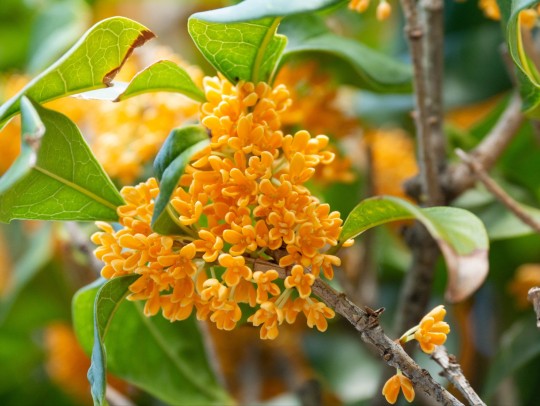
Osmanthus Wine tastes same as I remember, but where are those who share the memory XD
Origins: China
In the language of flowers, they carry the meaning of love and romance, symbolising true love and faithfulness
Smells like a mix of juicy peaches, ripe apricots with soft leather or suede.
Elaine - Lavender
Origins: Mediterranean
Represent purity, silence, devotion, serenity, grace, and calmness.
Biblical meaning of lavender symbolizes purity, devotion, and love
Delicate, sweet smell that is floral, herbal, and evergreen woodsy at the same time
Helbram - White Rose
Origins: Ancient Greece
Symbolize loyalty, purity, and innocence.
Combination of floral and fruity notes, with hints of honey and jasmine
Fun fact: A White Rose is what King used to kill Helbram (the first time) it turned red because of the blood
Gerheade - Mint
Origins: Mediterranean
Symbol of Hospitality and Wisdom
Gloxinia - Ginger
Origins: Maritime Southeast Asia
In many cultures, ginger is considered a symbol of love
Used in religious rituals to symbolize cleansing, protection and blessing.
Warm and spicy, with a hint of sweetness
Lancelot - Lemon
Origins: Unknown (said to be first grown in Northeast India, Northern Myanmar, or China)
Symbol of purity and cleansing
Headcanon Time
Since Nakaba hasn't spoken out about their scents I'll give my thoughts on the matter.
Lancelot introduced fruits into the mix of scents and Gloxinia smells like Ginger which is a root so I went ham with this.
Nasiens - Oleander or Sunflower
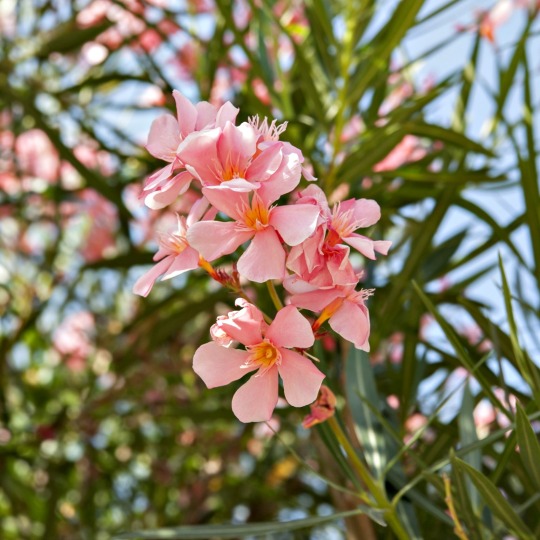
Oleander are toxic which is very fitting for our Mad Herbalist
Smells like Vanilla
Oleander symbolizes love, beauty, and resilience
I want one of Kiane's kids to smell like Sunflowers cause you know... Sunflower
Sunflowers also don't have a distinct smell so it's actually fitting for Nasiens since he grew up thinking he's human so there's really no natural fairy-like smell he could have detected from himself
Sunflower represents longevity, lasting happiness, adoration, and loyalty
Sixtus - Peach
Since Sixtus looks extremely like King I think it's only fitting if his scent is close to King's as well
Peaches symbolizes longevity
Belte - Jasmine
Belte gives Helbram energy and he kinda looks like him too so his scent also needs to give Helbram energy
Jasmine stands for purity, simplicity, modesty and strength.
Zana and Zillian - Blackberry and Raspberry
Since they're twins I want their scents to match
Blackberries are mild, sweet and slightly acidic scent, with earthy and woody nuances.
Some believed that blackberries contain properties of abundance and prosperity
Raspberries are fruity, sweet and slightly acidic
Raspberries are symbol of kindness in Christian art.
Tioreh - Pink Hyacinth
Phao - Lily of the Valley
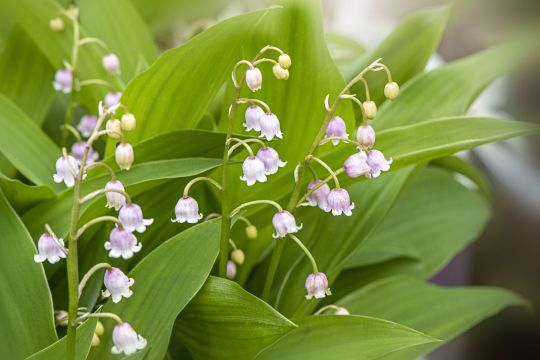
Symbol of purity, joy, love, sincerity, happiness and luck,
Has a floral and green scent, with fresh and slightly sweet notes
I want one of Kiane's kids scents to come from the earth, something underground. There's an underground Orchid but it smells bad so that won't do so I specifically looked for a flower that has an earthy scent. I also want it to be PINK for Tioreh
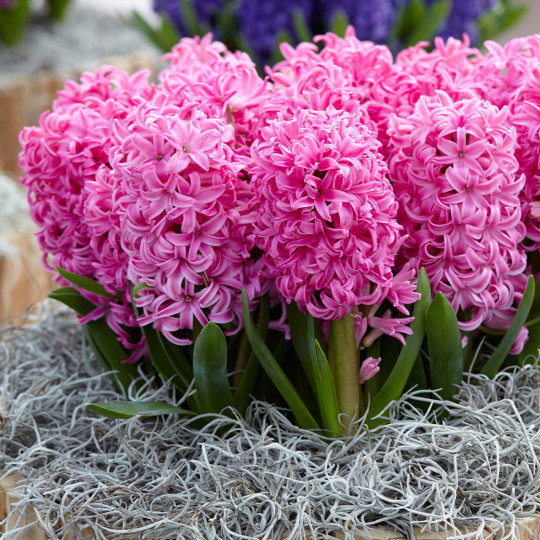
Sweet, robust, and earthy
Pink hyacinths symbolize playful joy.
#fairy scents#fairy clan#nnt king#fairy king harlequin#king harlequin#nnt elaine#Lancelot#Gloxinia#gerheade#helbram#Nasiens#Sixtus#Zana#Zillian#Belte#Phao#Tioreh#nanatsu no taizai#four knights of the apocalypse#seven deadly sins#4kota#nnt#mokushiroku no yonkishi#seven deadly sins sequel#nanatsu no taizai mokushiroku no yonkishi
65 notes
·
View notes
Text
What perfumes do the HL boys wear, by a complete perfume lover who is not an expert.
Hello there. I have been inactive for too long. Ever since my label as a scent witch by @pandanscafanfiction and being bullied by @tennoujinerin to post this, here it is. What perfumes I think the HL boys would wear:
I know I have done this before but after some revision and seeing how each character has been developed, lo and behold my new choices.

Sebastian Sallow:
Ah, the one who stole our hearts at first when we played the game. I chose Cedarwood as his main scent note for it's association with healing and death. Sebastian is an all rounder, not the type to have multiple bottles, one scent will do the job. Burberry's Hero, YSL's La Nuit De La Homme and Margiela Replica's Whispers in the Library (I chose this on purpose) have Cedarwood as it's note

Ominis Gaunt:
Ominis is upper class but it doesn't strike me as someone who wants to shout his status. It is a kind of scent that is subtle but you know it comes from the upper class. For that I chose Leather fragrances as it usually wears slowly on the skin, but on the right person it comes across as a quiet strong person. Gucci's Guilty Absolute, Dior's Fahrenheit and Margiela Replica's Jazz club are a great reflection of this.

Garreth Weasley:
As a potioneer who relies on his nose a lot, Garreth wouldn't see the point of wearing perfume. At best he would just need something that smells clean and fresh, but I added some citrusy notes for his fun loving nature. For that Chanel's Allure Homme Sport and Dior Homme Cologne would do the trick. To get is attention, choose a scent that sits close to the skin in an almost intimate level that would turn his head, such as Margiela Replica's Lazy Sunday Morning.

Leander Prewett:
For Leander I actually went for "Annoying" fragrances at first but seeing how he has been developed into the fandom, I rearranged for scents that are fresh with a twist. I wanted something that comes across as a people pleaser but there is the note that you can't put your nose to it (It's Rosemary) that makes you take a second sniff. For that, Armani's Aqua Di Gio Porfumo, Bvlgari's Aqva pour Homme and Issey Miyake's Fusion d'Issey are my picks.

Amit Thakkar:
I really wanted to pay homage to India for Amit, as India is the land where scents are used quite frequently in daily life. I chose a sandalwood perfume (Diptyque's Tam Dao) for it's usage in the worship of the Hindu Gods and Goddess, Cardamom (D&G The One) for it's usage in food and Saffron ( Penhaligon's Babylon) for the colour worn by Hindu Priests ( it symbolic of Sunsets/Sunrise and healing, apparently).

Andrew Larson:
I am amazed at the headcanons for Andrew but I digress he doesn't smell like herbs. Instead I chose Juniper Berries! Is this an odd choice? Of course, but considering it's freshness yet spicy notes with medicinal properties (not to mention it being found in most parts of the globe) it is a timeless scent. I tried my best to find scents that are light, something not too strong as it will need to sit close to the skin. Take a peek with Blvgari's Glacial Essence, Gucci's Guilty Cologne Pour Homme and Penhaligon's Juniper Sling.
#hogwarts legacy#hogwarts legacy characters#ominis gaunt#sebastian sallow#amit thakkar#garreth weasley#leander prewett#hogwarts legacy headcanons#andrew larson
106 notes
·
View notes
Text
Meta: Qualitea in the Orr Empire
Let’s talk tea customs of the Orr Empire. As an avid lover of tea myself, reading Turning was quite entertaining as I could project all my silly little tea headcanons on the characters (but ask me about those another time). From early on in the novel, we see that the Orr Empire does have a distinct tea culture, so this meta will take a look at what teas they drink, what their tea culture looks like, and how skilled our protagonists are at preparing tea (spoiler: they’re not. Everyone say “thank you, Nathan”, the only one who knows how to make a good cup of tea.)
Tea
Tea is a pretty common drink in the Orr Empire, but first, we have to talk about what tea it even is. Now, if you want to be precise and a snob, tea, as per merriam-websters first definition, is “a widely cultivated shrub (Camellia sinensis of the family Theaceae, the tea family) native to China, northern India, and southeastern Asia and having glossy green leaves and fragrant white flowers” and “the leaves, leaf buds, and internodes of the tea plant prepared for use in beverages usually by immediate curing by heat or by such curing following a period of fermentation”. Thus, tea, as a drink, is “an aromatic beverage prepared from tea leaves by soaking them in boiling water”. According to this first definition, tea refers only to the tea plant.
In the Orr Empire, we do know that the tea plant actually exists. In chapter 39, Kishiar makes tea for Yuder specifically using tea leaves and in chapter 51, it is mentioned that Keilusa drinks a “black tea giving off a unique aroma”.
In the Orr Empire, the beverage tea is also made by using “any of various plants“ like tea, which means preparing them “by soaking their parts (such as leaves or roots)“.
So what teas do they drink in the Orr Empire?
Fresh chamomile, which is in season at the start of the novel (Chapter 16)
Black tea (Chapter 51)
Tea made from the leaves of a medicinal herb Rosa Faria la Orr cultivates (Chapter 58)
Tea made from a flower with an “extraordinarily fresh and cool scent” by pouring boiling water over it. The flower grows near Pearl Tower and helps with sleep deprivation, headaches and can be analgesic (Chapter 113, 143).
Tea blends (Chapter 143, 162)
Peppermint tea with honey (Chapter 162)
Tea made of the fluaville flower, which thrives on a barren mountain, devoid of sunlight, rain, and fertile soil (Chapter 167)
Cold tea made of ponegri, which is won by diluting the potent narcotic components of the ponesa plant to edible levels. It reduces pain and has mood-enhancing effects, as well as dulling the surroundings. (Chapter 205)
Bitter herbal teas for medicinal reasons (Chapter 403)
A pale red tea that might be black tea or a rooibos of some kind (Chapter 602)
A Southern tea with mingled sweet fruit and floral scents, rich in aroma and a yellow color. It is probably a green tea blend. (Chapter 919)
If you look at this – dare I say complete – list, you can roughly distinguish between teas drunk for pleasure, which seems to include teas made from the tea plant always, as well as some herbal, predominantly floral teas, and medicinal teas.
The rather high mention of medicinal teas is very much Keilusa la Orr’s fault, who drinks tea predominantly to help with his health condition. It’s also the only time something like honey is added to the tea. Adding milk, for example, isn’t mentioned at all! We also know that there exist teas of varying qualities and that nobles tend to drink higher-quality tea (Chapter 39).
Funnily enough, tea is generally regarded as a warm beverage, you want to drink it hot (Chapter 468). The only exception so far appears to be Katchian’s ponegri tea, which he drinks cold (Chapter 205).
How do you drink tea in the Orr Empire?
Well, first of all, they use teacups and pots! While this might seem like a small detail to you, a proper teacup is shaped to enhance the flavor and fragrance of the tea. Teacups tend to be lighter than coffee mugs and have a broader surface. While they are never particularly described in the novel, besides the note that they are made of porcelain (Chapter 15) the specification that they are for tea is enough to let us conclude that you don’t just drink tea, but that there is a culture associated with it.
Tea Culture in the Orr Empire
Drinking tea, when not for medicinal purposes, is a pleasure drink and appears to be mainly a social convention in the Orr Empire, which also makes it a good gift (Chapter 223). An invitation for tea is an invitation to socialize and get to know another person. Kishiar’s tea sets are made from “beautiful porcelain” (Chapter 15) and there is an art to gracefully preparing tea (Chapter 39, 223, 979). Having tea is not just a nice get-together, even when Duke Diarca enjoys a cup of tea with his close friends (Chapter 385), the preparation method matters. Similarly, even if Kishiar has Nathan fetch cookies, cakes and other sweets because of Yuder’s sweet tooth, it seems to be common to have snacks while having tea. Having popular and famous sweets that complement your tea while you drink it is simply good manners (352).
But the Orr Empire wouldn’t be the Orr Empire if there wasn’t also a class divide about it. Kishiar notes early on that Yuder “won’t have many opportunities to drink tea [he’s] personally prepared” (Chapter 39). Disregarding that this is a fucking lie on Kishiar’s part, the point he, most likely, is trying to refer to here, is that Kishiar, who both as a Duke and thus part of the nobility as well as Yuder’s superior, would not typically make tea for his subordinate.
This holds true for most of the little tea sessions we see in the novel! Nathan prepares Kishiar’s tea (Chapter 16, 58, and most other times Kishiar has tea), the servants of House Apeto prepare the tea for the Cavalry (Chapter 133), Katchian’s servants prepare him his tea (Chapter 205), Yuliver makes Keilusa’s tea (Chapter 303). While all of this is of course also expected of servants, it is also a show of trust as Kishiar points out himself, after all, it would be very easy to poison your employer’s tea (Chapter 16).
We also see that offering tea to your guests is polite, that is if you don’t make them wait for ages as the Apeto do with the Cavalry (Chapter 233). Kiolle also assumes that he’s grown closer to Katchian because they regularly drink tea together (Chapter 586).
So, much like in our world, drinking tea in the Orr Empire is not just necessarily having a cup of tea, but has a rich history.
How do I make a perfect cup of tea aka Kishiyu Cringefail Tea
Kishiar looks graceful preparing tea, but he does not, as far as I can tell, actually make a good cup of tea. Well, so how does one make a good cup of tea?
“Please, take a seat.” After roughly sprinkling the tea leaves that Kanna had once forced onto the two tea cups, a small movement of his finger formed two droplets of water in the air. The droplets divided into two streams, filling each cup. With another flick of his hand, the tea heated to a suitable temperature, steaming in the cups. Looking down at the steamy tea cup, Yuder lightly pushed one toward Kishiar. “Wait until the aroma comes out before you drink.” “You are remarkably efficient in brewing tea. Nathan would be disappointed if he saw this.” “If you have the skill, why not use it?” (Chapter 223)
Well, not like this obviously. Hilariously enough, Kishiar makes tea just the same – scooping leaves into the pot and boiling it after. So according to Nathan’s expert opinion, this is not how you’re supposed to prepare them.
The only prominent life tea culture I could find, by the way, where you boil the tea leaves with the water is the Egyptian Saiidi tea, but that one is sweetened with sugar, and neither Kishiar nor Yuder do that, so I stand by my argument that they both just prepare terrible tea.
Tea Culture (Wikipedia)
Tea Preparation Guide (Teapedia)
26 notes
·
View notes
Text

There are several countries known for having some of the healthiest cuisines in the world, characterized by fresh, whole foods, a variety of fruits and vegetables, lean proteins, and balanced flavors. Some of these countries include:
1. Japan: The traditional Japanese diet is based on fish, seafood, rice, tofu, vegetables, and fermented foods like miso and kimchi. Japanese cuisine is known for its emphasis on fresh, seasonal ingredients and simple, flavorful dishes.
2. Greece: The Mediterranean diet, which is commonly found in countries like Greece, is rich in olive oil, whole grains, fruits, vegetables, nuts, seeds, and fish. The diet is high in antioxidants, healthy fats, and fiber, and is associated with numerous health benefits.
3. Italy: Italian cuisine is known for its emphasis on fresh, high-quality ingredients such as tomatoes, olive oil, garlic, herbs, and whole grains. The Mediterranean diet, common in Italy, is associated with a lower risk of heart disease and other chronic conditions.
4. South Korea: Korean cuisine features a wide variety of fermented foods, vegetables, lean proteins, and grains. Kimchi, a staple in Korean cuisine, is a fermented vegetable dish that is rich in probiotics and has numerous health benefits.
5. India: Indian cuisine is characterized by a wide array of spices, legumes, vegetables, whole grains, and lean proteins like lentils and chickpeas. Many traditional Indian dishes are vegetarian or vegan, making them rich in plant-based nutrients.
6. Thailand: Thai cuisine is known for its bold flavors, fresh herbs, and aromatic spices. Thai dishes often feature a balance of sweet, sour, salty, and spicy flavors, and incorporate plenty of fresh fruits, vegetables, and seafood.
7. Morocco: Moroccan cuisine is rich in spices, herbs, nuts, seeds, vegetables, and lean proteins like fish and poultry. Tagines, a traditional Moroccan stew, often contain a variety of vegetables and are cooked slowly to infuse flavors.
#healthy food#food for thought#food fight#comfort food#fast food#food photography#foodie#food#foodpics#foodlover#japanese food#foodmyheart#tw food#healthy salad recipes#lunch recipes#pasta recipes#pasta recipe#salad recipes#soup recipe#recipe#reciprocity#recipies#recipes#cozy autumn#cozy fall#cozyhome#cozy cozy#cozy living#autumn cozy#cozy art
11 notes
·
View notes
Text
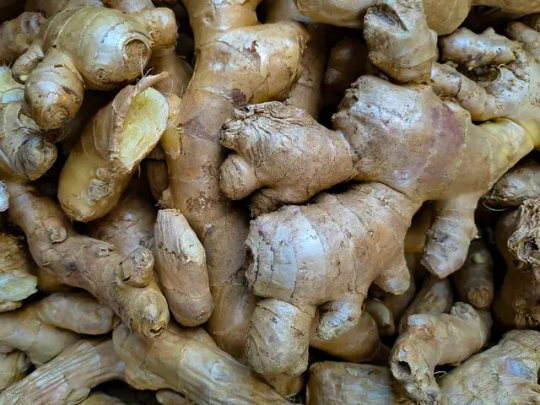
▪️Zingiber officinale.
Ginger was cultivated and used as a spice and medicine in India and China, before historical records even begin. The earliest medical texts of both countries extensively discuss the therapeutic uses of the spice, both in fresh and dried form.
Chinese texts from the fourth century BC describe ginger as a remedy for treating stomach issues, nausea, diarrhea, cholera, toothaches, bleeding and rheumatism. Chinese herbalists also use the herb to treat various respiratory conditions, including coughs and colds. In the fifth century, Chinese sailors were using ginger’s vitamin C properties to treat scurvy on long voyages.
In India, Ayurvedic texts consider ginger to be one of the most important herbs available, to the extent of describing it as an entire medicine chest in itself. Ayurvedic practitioners prescribe ginger as a powerful digestive aid since it fuels digestive fire, whets the appetite, and clears the body’s micro-circulatory channels. This helps to improve the assimilation and transportation of nutrients to targeted body tissues. Ginger is also used in Ayurveda as a remedy for joint pain, nausea and motion sickness.
With such staggering benefits, it’s no wonder the spice has been a staple in kitchens and medicine cabinets for over five thousand years. Moreover, it continues to prove to be an effective natural remedy for many modern diseases, described below.
▪️ Health benefits of ginger.
Popular digestive aid, settles stomach issues.
Powerful anti-inflammatory, reduces joint pain and relieves arthritis.
Therapy for nausea, reduces motion sickness and more.
Provides pain relief, soothes migraines and menstrual pain:
Ginger works on migraines by blocking prostaglandins, which stimulate muscle contractions, control inflammation in the blood vessels, and impact some hormones. Drinking or eating raw ginger at the onset of a migraine attack stifles prostaglandins to block the unbearable pain, and stop the associated nausea and dizziness.
Ginger can also help women effectively reduce the pain and inflammation associated with dysmenorrhea or endometrios.
Anti-tumor properties, successful in killing ancer cells.
Anti-diabetic compounds, lowers blood sugar and increases insulin release.
Heals the heart, treats a variety of cardiovascular conditions.
Relieves respiratory disorders, effective in treating asthma.
Immunity-booster, reduces coughs and colds:
Ginger is a wonderful immune system booster, making it a well-known treatment for colds and flus. And since it helps calm symptoms of upper respiratory tract infection, it also works on coughs, sore throats and bronchitis.
Ginger also has thermogenic properties, so it can warm up the body in the cold and, more importantly, can promote healthy sweating. This type of sweating, which helps to detoxify the body and assist in releasing cold symptoms, has also been shown to fight off bacterial and fungal infections.
Best of all, ginger has concentrated active substances that are easily absorbed by the body, so you don't have to use very much to receive its beneficial effects.
Potent antioxidant, slows down DNA damage.
▪️ Ginger components.
Ginger is closely related to turmeric, cardamom and galangal. Similar to other plants, ginger is a very complex mixture of compounds, containing several hundred known constituents, including beta-carotene, capsaicin, caffeic acid and curcumin.
The pungency in ginger is derived from the principle compounds gingerol, shogaol and zingerone.
Gingerol is the active component in fresh ginger, and is related to capsaicin, which is the active component in chilli peppers. Zingerone – the least pungent compound – occurs when gingerol is cooked, while shogaol – which is twice as pungent – occurs when gingerol is dried.
2 notes
·
View notes
Text
🎄 Celebrate the Season
with Timeless Tradition! 🎉
Looking for the perfect gift for the culinary enthusiast in your life?
This Christmas and New Year, bring home the charm of handmade cooking with our exquisite Mortar & Pestle sets !!
Why Choose Mortar Magic ✨?
🌟 Premium Quality: Crafted from the strongest stone - GRANITE for lasting elegance.
🌟 Authentic Flavor: Perfect for grinding spices, herbs, batter, creating fresh masala pastes & chutneys.
🌟 Versatile Use: A must-have for any kitchen from home cooks to seasoned chefs.
🌟 Aesthetic Design: Functional and decorative - adds a rustic charm to your counter & colour granite sets can compliment your kitchen.
Holiday Specials Just for You !!
🎁 Exclusive Festive Discounts
🎁 Limited-Edition Holiday Colours
🎁 PAN India Shipping Available
✨ Gift the joy of authentic cooking this holiday season !! ✨
Order Now while Stocks Last !!
Mortar Magic ✨
WhatsApp: 073059 59930
Embrace Elegance,
Celebrate Tradition 🎊
#shopping #cooking #indian #india #newyear #love #kharal #okhli #khalbatta #silver #brass #granite #stone #music #carols #christmas #cake
#new year#new year 2025#christmas#plum cake#cake#home#granite#stone#kitchen#food#cooking#mortar and pestle#pickle#spice#chutney#love#aesthetic#asmr#miley cyrus#justin bieber#english#music#party#xmas carols#trending#viral
2 notes
·
View notes
Text
Find the Best Hydroponic Salad Store In Delhi NCR | Inhydrogreens

When it comes to choosing greens from the Hydroponic Salad Store In Delhi NCR, this is one of the most frequently asked questions. By examining the vegetables' colour and quality, you may determine whether they are fresh and of high quality. Given the prevalence of online shopping, you can check the ratings and reviews to confirm that the retailer is providing you with the highest-quality greens.
#Salad box online#Hydroponic Salad Box Online#Salad box near me#Fresh salad box#Leafy greens in india#Leafy Greens Salad Box#Leafy Green Basket#Best leafy greens#Fresh herbs in india#Microgreen salad near me
0 notes
Text
Pairing Cheese Sauce with Different Types of Pasta
Pasta is one of the most versatile and beloved dishes worldwide. Its appeal lies in the wide variety of pasta types and sauces that can transform a simple meal into a gourmet experience. Among the many sauces, cheese sauce holds a special place for its creamy texture and rich flavor, making it a favorite for pasta lovers everywhere.

As a leading cheese sauce manufacturer in India, Modern Food Products understands the art of creating the perfect cheese sauce that complements different pasta types. Whether you are a home cook experimenting in the kitchen or a chef curating a menu, pairing the right pasta with cheese sauce can elevate your dish to new heights. This blog explores how to pair cheese sauce with various pasta types while highlighting Modern Food Products as a trusted cheese sauce supplier in Vadodara and cheese sauce exporter in Gujarat.
Why Cheese Sauce is a Classic Choice for Pasta
Cheese sauce is celebrated for its creamy texture, savory flavor, and ability to coat pasta evenly. Its versatility makes it an excellent companion for various pasta dishes, from simple comfort food to sophisticated gourmet creations. The richness of cheese sauce pairs exceptionally well with starchy pasta, creating a balanced and indulgent dish.
Being a trusted cheese sauce manufacturer in India, we craft sauces that meet global standards, ensuring they enhance every pasta dish they accompany.
Types of Pasta and How to Pair Them with Cheese Sauce
1. Macaroni with Classic Cheese Sauce
Macaroni and cheese are synonymous with comfort food. The small, tube-shaped pasta pairs perfectly with a creamy and rich cheese sauce. The sauce clings to the macaroni, ensuring every bite is bursting with flavor. For an extra touch, consider adding breadcrumbs on top and baking the dish for a golden, crispy crust.
As a leading cheese sauce supplier in Vadodara, we recommend using high-quality cheese sauce to achieve the perfect creamy texture and flavor for this timeless dish.
2 Penne with Spicy Cheese Sauce
Penne’s tubular shape and ridged surface make it an ideal choice for holding sauces with a bit of texture. A spicy cheese sauce with hints of chili or paprika adds a bold kick to the dish. This pairing is perfect for those who enjoy a little heat in their meals.
Modern Food Products, as a renowned cheese sauce exporter in Gujarat, ensures that our cheese sauce products are versatile enough to accommodate flavor enhancements like spices and herbs.
3. Fettuccine with Alfredo-Style Cheese Sauce
Fettuccine, a flat and wide noodle, is best suited for rich and creamy sauces. A cheese sauce with a hint of garlic and parmesan creates an Alfredo-style dish that’s indulgent and satisfying. Add grilled chicken or sautéed mushrooms to elevate the dish further.
4. Spaghetti with Cheddar Cheese Sauce
While spaghetti is traditionally paired with tomato-based sauces, it can also shine with a mild cheddar cheese sauce. The thin strands of spaghetti are evenly coated, creating a smooth and flavorful experience. Sprinkle freshly chopped parsley on top for added freshness and color.
5. Fusilli with Herbed Cheese Sauce
Fusilli’s spiral shape makes it perfect for trapping cheese sauce. An herbed cheese sauce, infused with basil, oregano, or thyme, enhances the pasta’s texture and flavor. This pairing is great for a light yet flavorful meal.
Modern Food Products, as a trusted cheese sauce supplier in Vadodara, offers cheese sauces that can be easily customized with herbs and spices to suit your culinary needs.
6. Ravioli with Cheese Sauce
Stuffed pasta like ravioli pairs beautifully with a mild cheese sauce that does not overpower the filling. Whether your ravioli is filled with spinach, ricotta, or mushrooms, a light cheese sauce provides the perfect complement, enhancing the filling without overshadowing it.
7. Shell Pasta (Conchiglie) with Smoked Cheese Sauce
Shell pasta is designed to scoop up sauce, making it an ideal choice for thicker cheese sauces. A smoked cheese sauce adds a unique depth of flavor to this pairing. This combination is perfect for those looking to try something distinct yet comforting.
Tips for Perfectly Pairing Cheese Sauce with Pasta
Match Sauce Consistency with Pasta Shape: Thicker sauces work best with ridged or tubular pasta, while smoother sauces pair well with long or flat noodles.
Balance Flavors: Ensure the cheese sauce complements rather than overpowers the pasta or any additional ingredients.
Incorporate Texture: Add crunchy toppings like breadcrumbs or nuts to create a contrast with the creamy cheese sauce.
Experiment with Add-Ins: Enhance your cheese sauce with ingredients like garlic, chili, herbs, or even wine for a unique twist.
Why Choose Modern Food Products for Cheese Sauce?
Modern Food Products is a trusted name among cheese sauce manufacturers in India, committed to providing high-quality, versatile cheese sauces that cater to diverse culinary needs. Here is why we stand out:
1. Premium Quality Ingredients
Our cheese sauces are made from the finest ingredients, ensuring exceptional taste and consistency.
2. Wide Range of Applications
From pasta dishes to dips and spreads, our cheese sauces are versatile and adaptable for various cuisines.
3. Global Standards
As a leading cheese sauce exporter in Gujarat, we adhere to international quality standards, making our products suitable for both domestic and international markets.
4. Customizable Solutions
We work closely with clients to provide customized cheese sauce solutions, tailored to meet specific culinary and industrial requirements.
5. Trusted Supplier
As a reliable cheese sauce supplier in Vadodara, we ensure timely delivery and excellent customer service, making us a preferred partner for businesses and individuals alike.
Conclusion
Pairing the right cheese sauce with different types of pasta can elevate your culinary creations, turning simple ingredients into a masterpiece. Whether you are preparing a comforting bowl of macaroni and cheese or an elegant fettuccine Alfredo, the quality of the cheese sauce plays a crucial role in the dish’s success.
As a leading cheese sauce manufacturer in India, Modern Food Products takes pride in crafting premium cheese sauces that enhance the flavor and appeal of pasta dishes. With our commitment to quality and innovation, we have become a trusted cheese sauce exporter in Gujarat and a preferred cheese sauce supplier in Vadodara.
For high-quality cheese sauces that pair perfectly with your favorite pasta, trust Modern Food Products to deliver nothing but the best. Contact us today to explore our range of cheese sauce products and elevate your pasta dishes to the next level.
#Cheese sauce manufacturer in India#Cheese sauce exporter in Gujarat#Cheese sauce supplier in Vadodara#India#united arab emirates#Iraq#Iran#Kuwait#private labelling services
4 notes
·
View notes
Text

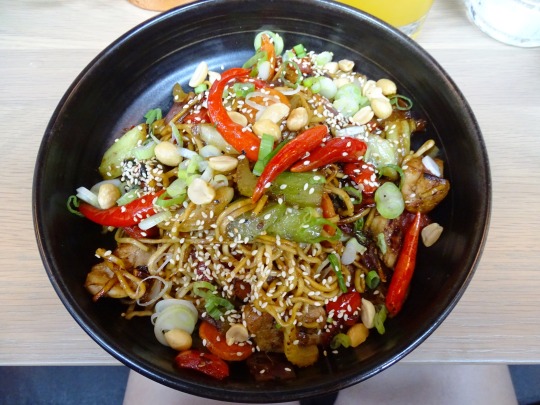

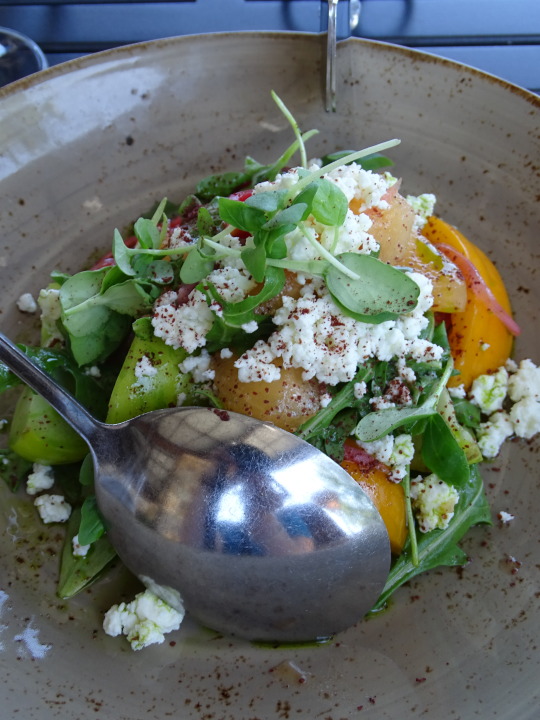
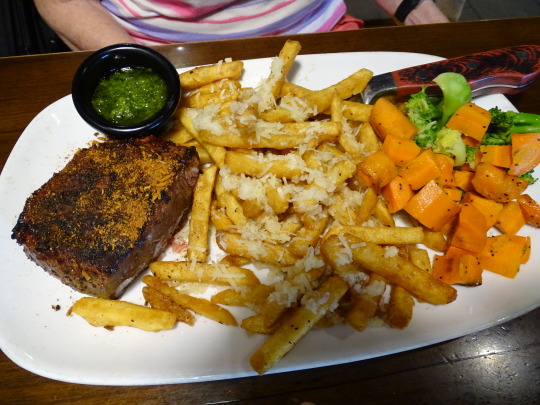

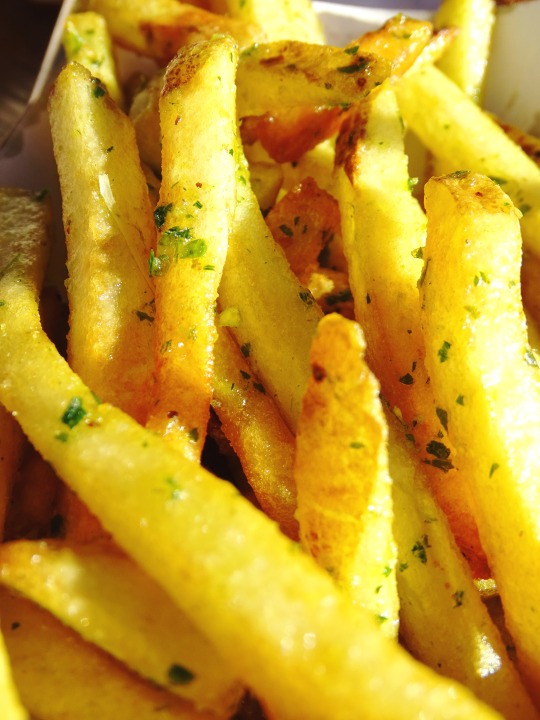
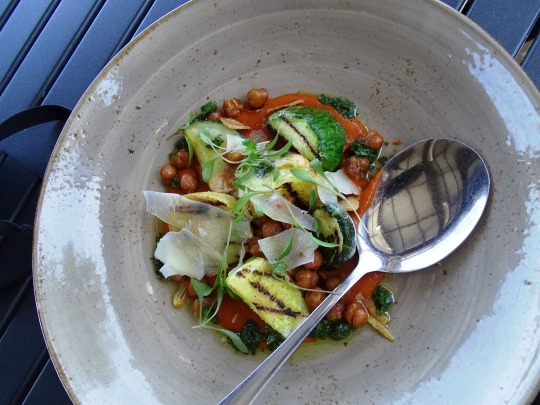

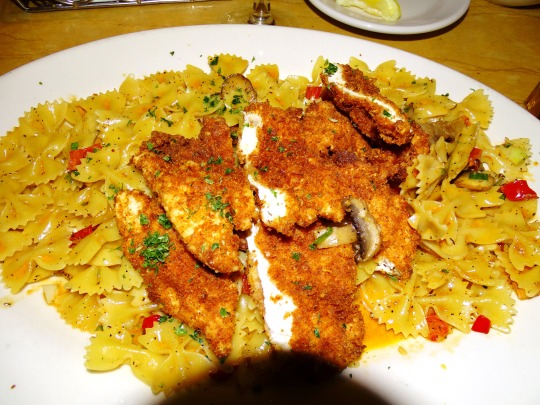
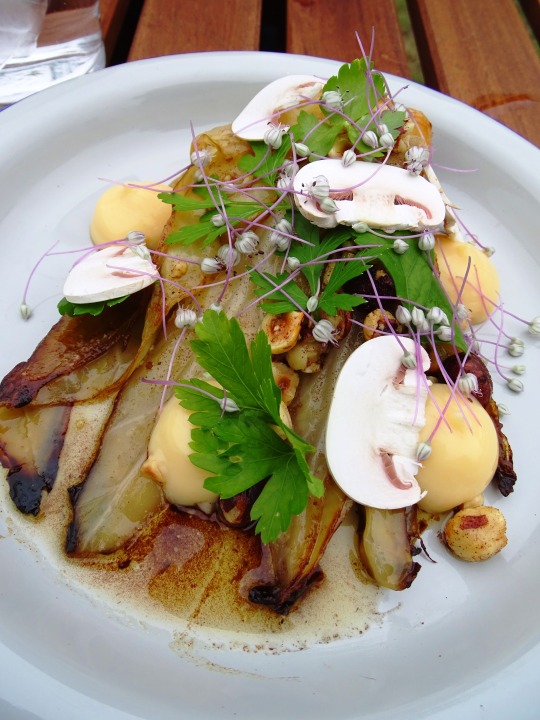
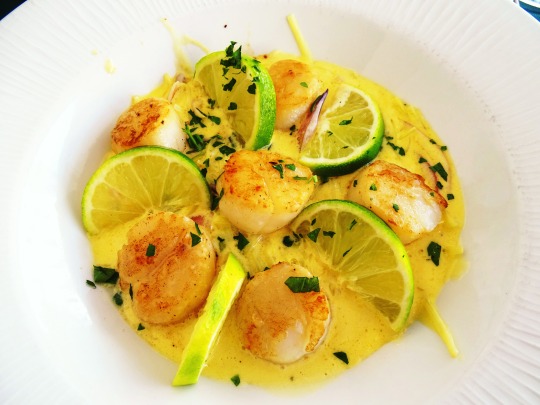
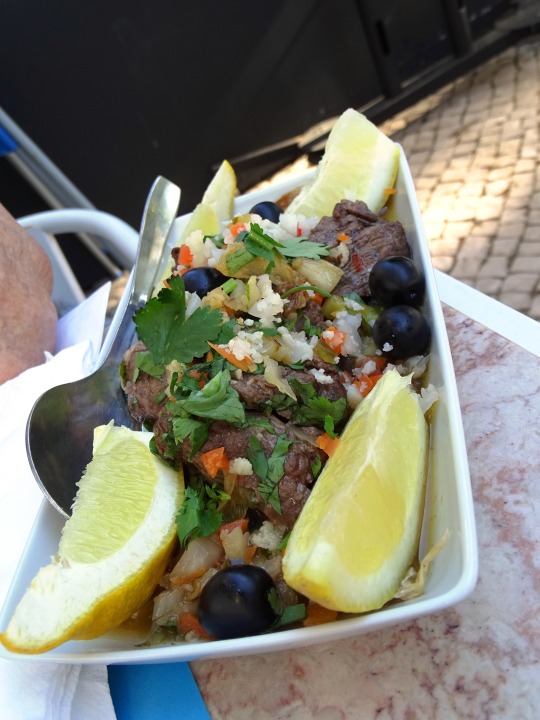


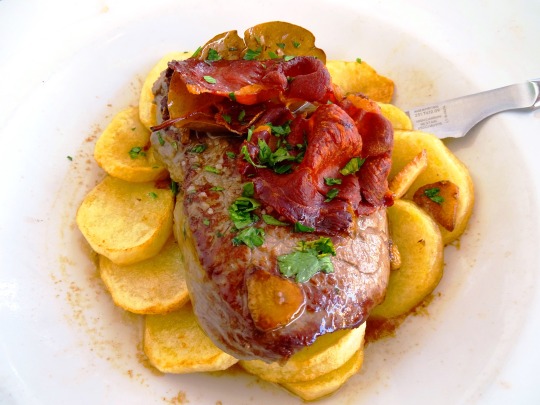

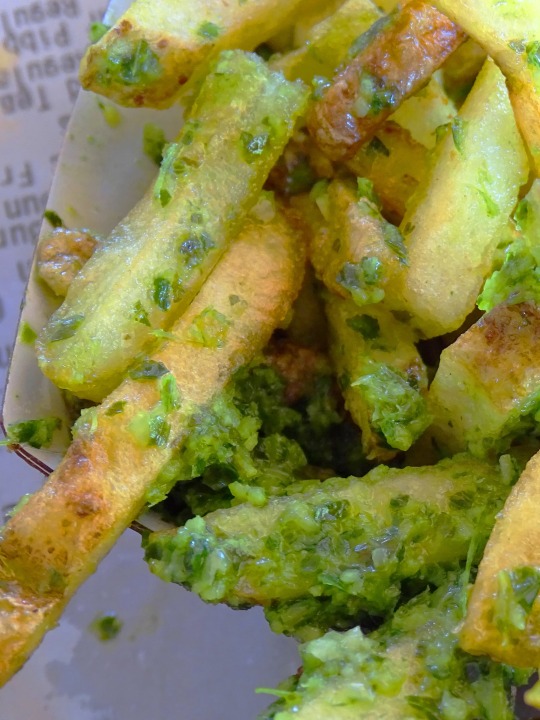
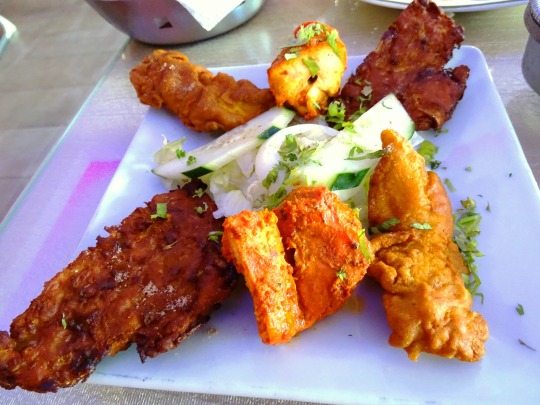
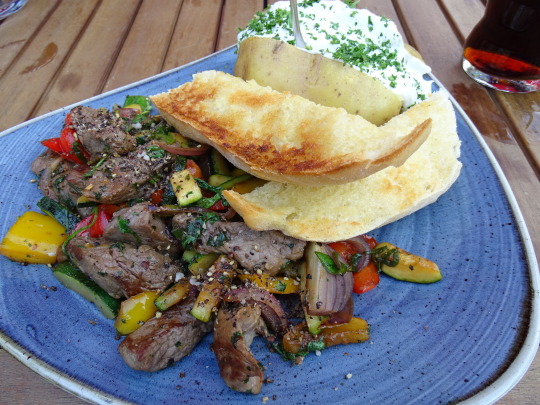
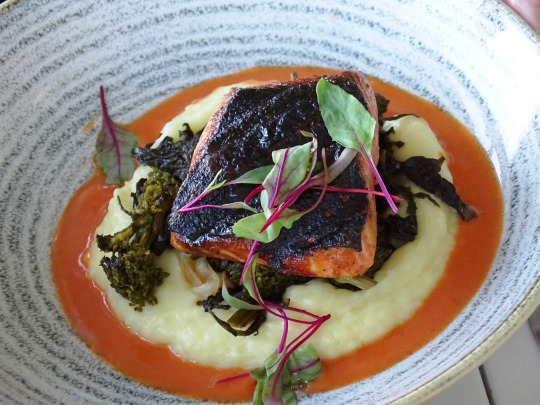
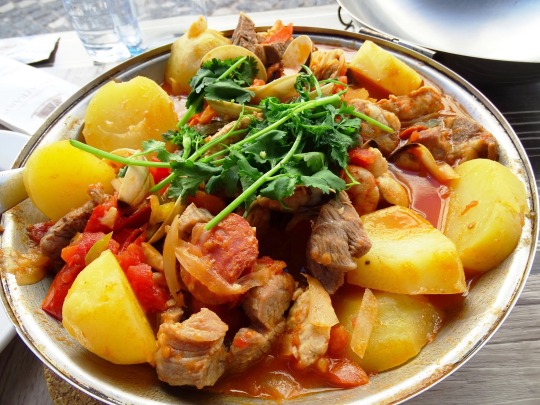
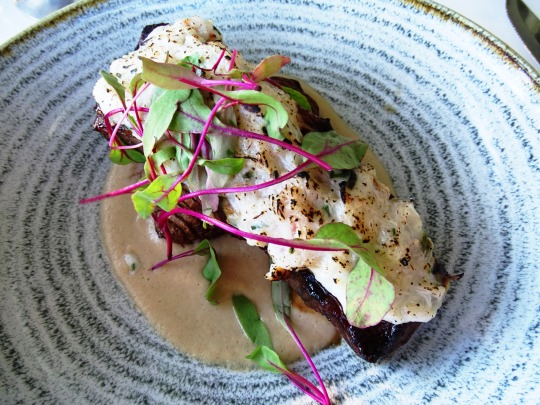

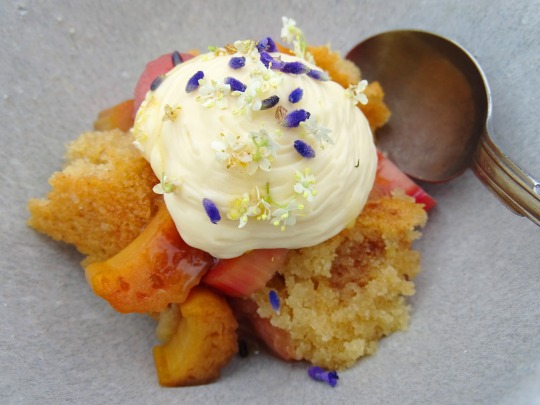
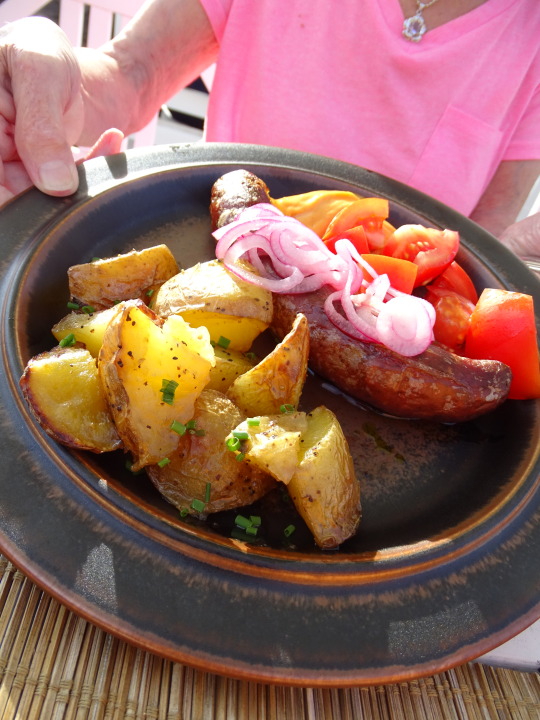
National Herb Day
It is National Herb Day on May 4! It is usually celebrated annually on the first Saturday of May. The HerbDay Coalition, an organization of five non-profit groups, started National Herb Day to raise awareness about the useful properties and importance of herbs in daily life. They also work towards encouraging people to learn more about the herbs and provide a better understanding of the extensive uses of herbs in daily life. Herbs are extensively used in food, medicines, and cosmetics. They also served as the first medicines ever used by humans to cure various ailments.
History of National Herb Day
Botanically, herbs are classified as the green parts of a plant used in food or medicine. Herbs are as old as human civilizations and have been used for cooking and medicine since time immemorial. There is well-preserved archaeological evidence pointing to the use of herbs 60,000 years ago. Neanderthals, ancestors of modern Homo sapiens, started using herbs for healing. In a way, we can say that herbs predate even that of recorded history and form the origin of much of modern medicine. Archeologists have discovered traces of pollen and other plant materials near burials, indicating the use of herbs.
There is hardly any civilization that didn’t take advantage of the use of herbs. The Sumerians, Egyptians, Indians, and Chinese all used herbs independently of one another. They created clay tablets that date back 5,000 years and listed hundreds of medicinal plants on them. In Egypt, texts like Papyrus Ebers describe ailments, treatments, and around 850 medicinal plants. The Indian medicinal school of Ayurveda, which uses natural remedies and herbal medicine to cure health conditions, is still prevalent in this modern age. Ayurvedic medicine has used many herbs dating back to 4000 B.C.
The study and use of herbs thrived in the Middle Ages when most cultures attributed spiritual qualities to herbs. A prominent example is the holy status of basil leaves in India. There is also a resurgence in the use of herbs in the last 40 years due to the impact of chemical drugs and the investment in pharmaceutical research and development. To address the growing popularity of herbs and to spread their importance, the HerbDay Coalition started National Herb Day.
National Herb Day timeline
6,000 Years Ago
The Rise of Ayurveda
The “Rig Veda” and the “Atharva Veda,” the Vedic scriptures of Hinduism, mention the prevalence of medicinal plants and Ayurveda.
5,000 Years Ago
Sumerian Texts on Herbs
Sumerians write about hundreds of medicinal herbs on clay tablets.
1526 A.D.
The First English Herbal
Peter Treveris prints “Grete Herball,” the first English herbal.
1600 — 1700
The Era of Bubonic Plague
The popularity of herbal medicines declines because of their ineffectiveness against the Bubonic Plague.
National Herb Day FAQs
How many herbs are there in the United States?
There are approximately 75 to 100 herbs listed in the National Library of Medicine
What is the most popular herb in the world?
Cumin is generally considered the most popular herb in the world.
Is an herb a vegetable?
Herbs are a subset of vegetables, which are generally composed of flavorful leaves of plants such as cilantro and basil.
National Herb Day Activities
Buy herbal products: Herbal products are rich in medicinal properties and nutrient values. Purchase herbal products for your daily use.
Invite friends for an herbal-themed party: Invite friends for an herbal-themed party. Create food and decorations in the shape of various herbs available in your locality.
Create an herbal garden: Create an herbal garden in your backyard. Try herbs that are already available in your locality before expanding your horizons over time.
5 Facts About Herbs That You Should Know
Stronger flavor for dried herbs: Both dried and fresh herbs can be used, but dried herbs have a stronger flavor.
Herbalists and botanists: In the middle ages, botanists were known as herbalists.
Herbal: The book of plants: A book containing the names, legends, stories, and descriptions of plants is called a ‘herbal.’
Herbal medicine users: 80% of people worldwide use herbal medicines.
Herbal medicines in Germany: Around 600 to 700 plant-based medicines are available in Germany.
Why We Love National Herb Day
Low side effects: Herbal medicines have fewer side effects compared to modern medications. It may be slow compared to modern medicine, but certain herbal medicines are effective against many lifestyle diseases.
Good for health: Herbs are good for your health. They are rich in nutrients and have medicinal value.
A second option: Herbal medicines are a second option for various lifestyle diseases. Major diseases like diabetes can be controlled with herbal remedies.
Source
#National Herb Day#4 May 2024#NationalHerbDay#first Saturday in May#salmon with potato salad#bratwurst#cabbage#Steakpfanne#Sweden#Germany#food#restaurant#original photography#Truffle Fries with parmesan reggiano#Garlic Fries#USA#roasted potatoes#mushroom#Madeleine#loaded baked potato#travel#vacation#Filet Port#scallops#Cataplana de marisco
2 notes
·
View notes
Text
The Flavorful Journey of SpoonSome
Biryani: A Culinary Tale
Introduction:
SpoonSome Biryani, a culinary delight that transcends borders and unites taste buds, has a journey as rich and diverse as its aromatic flavors. From humble beginnings to becoming a symbol of culinary excellence, the story of SpoonSome Biryani is a testament to the passion and dedication of its creators.
Biriyani
Biryani, a fragrant and flavorful one-pot dish, has captured the hearts and palates of millions across India. Whether it’s a festive occasion, a family gathering, or a simple weeknight dinner, biryani graces the table with its aromatic presence. In this article, we’ll explore the rich history, diverse variations, and the magic behind this beloved culinary masterpiece.
Origin of Biriyani
Biryani’s origins are shrouded in mystery, with various theories tracing it back to Persia, the Mughal courts, or even ancient India. Regardless of its beginnings, biryani has evolved over centuries, blending local ingredients, spices, and cooking techniques.
The Mughals, known for their opulent feasts, elevated biryani to an art form. They combined Persian pilaf techniques with Indian flavors, creating a harmonious symphony of rice, meat, and spices.
Regional Variations
Hyderabadi Biryani: The Nizams of Hyderabad perfected this style. It’s a marriage of Mughlai and local Telugu flavors. The raw biryani involves layering marinated meat and partially cooked rice, sealing the pot, and slow-cooking it.
Lucknowi Biryani: Awadhi biryani is fragrant and delicate. It uses saffron-infused rice and slow-cooked meat, often garnished with fried onions and raisins.
Malabar Biryani: Kerala’s Malabar coast offers a spicy version with coconut milk, curry leaves, and a hint of sweetness.
Sindhi Biryani: Influenced by Pakistani cuisine, Sindhi biryani features marinated meat, potatoes, and aromatic spices.
Origin Story:
The tale of SpoonSome Biryani begins in the bustling streets of Trivandrum, where a young man named Vysakh honed their craft in the art of biryani-making. Inspired by the rich culinary heritage of the region, a group of young entrepreneurs set out to create a biryani experience like no other. Thus, SpoonSome Biryani was born, blending traditional recipes with modern innovation.
On streets in India, where flavors collide and cultures intertwine, there exists a biryani that defies convention. Spoonsome Biryani, born from the creative mind of entrepreneur Vysakh, is more than just a dish – it’s an experience.
Spoonsome, a maverick in the culinary world, envisioned a biryani that would transcend boundaries. Our journey began with a simple question: “What if we reimagine the classic biryani?”
Spoonsome Biryani emerged as the answer – a fusion of tradition and innovation, where every grain of rice tells a story.
Early Beginnings
Recipe Perfection:
At the heart of SpoonSome Biryani's success lies its signature recipe, carefully crafted over years of experimentation and refinement. The secret blend of aromatic spices, tender meat, and fragrant basmati rice creates a symphony of flavors that dance on the palate with every bite.
Each ingredient is meticulously selected to ensure the perfect balance of taste and texture, making SpoonSome Biryani a true culinary masterpiece.
Magic of Biriyani
Basmati Rice The canvas for Spoonsome Biryani, aged basmati rice, forms the foundation. Each grain absorbs the essence of spices and marinated meat.
Marinated Meat Whether succulent chicken, tender lamb, or fragrant fish, the choice of meat defines the biryani. Spoonsome secret lies in the marinade – yogurt, spices, and love.
Spices of Cinnamon, cardamom, cloves, and star anise dance together, creating a symphony of flavors. Spoonsome spice blend is a guarded treasure.
Herbs Fresh mint, cilantro, and curry leaves add brightness and balance. Their whispers infuse every layer.
Making Delicious Dums
Biryani’s magic lies in the “dum” method. The pot is sealed with dough or cloth, trapping steam and flavors. The slow, gentle heat ensures that every grain of rice absorbs the essence of the spices and meat.
The unveiling of a biryani pot is akin to opening a treasure chest – the aroma escapes, and anticipation reaches its peak.
The Lightness Within
Spoonsome challenges the notion that biryani must be heavy. His creation is a delicate balance – rich in flavor yet light on the palate.
No excessive oil or ghee here. Instead, he achieves depth through spices and technique.
The Aroma
As you approach spoonsome, the air changes. It becomes a canvas, painted with the fragrant strokes of cinnamon, cardamom, and cloves. The spices, carefully measured, release their essence – a promise of what’s to come. The aroma dances around you, teasing your senses.
Spoonsome Biryani: A Culinary Symphony of Flavor
In the heart of bustling markets, where the air is thick with spice and anticipation, lies a biryani that defies convention. Spoonsome Biryani, born from the creative genius of entrepreneur Vysakh, transcends mere sustenance. It’s an orchestra of taste, a symphony of fragrance, and a celebration of culinary artistry.
A Flavorful Feast with Hidden Health Benefits
Biryani, including the innovative Spoonsome Biryani, isn’t just a delightful dish; it also offers several health benefits. Let’s explore how this aromatic creation can positively impact your well-being:
Anti-Inflammatory Properties:
The spices used in biryani masala, such as cumin, turmeric, and coriander, possess anti-inflammatory properties.
These spices aid digestion, soothe the gut, and may even boost immunity.
Digestive Aid:
Cumin and cloves, present in biryani masala, have carminative qualities.
They help prevent bloating, neutralize acidity, and promote healthy digestion.
Metabolism Boost:
Indian spices in biryani masala are rich in phytonutrients.
These compounds accelerate metabolism, potentially aiding weight management.
Protein and Fiber Content:
Spoonsome Biryani, especially if it includes chicken or other meats, provides a good amount of protein.
Additionally, the rice contributes fiber, promoting satiety and supporting overall health.
Antioxidant-Rich Spices:
Biryani contains spices like ginger, cumin, and curcumin (from turmeric).
These spices have antibacterial, anti-inflammatory, and even antiviral properties, making them cleansing powerhouses.
Remember, enjoying biryani in moderation allows you to savor its flavors while reaping these hidden health benefits. So, the next time you indulge in a plate of Spoonsome Biryani, relish not only the taste but also the well-being it brings!
Expansion and Recognition:
As word of SpoonSome Biryani's delectable offerings spread, the brand quickly gained a loyal following, both locally and internationally. With a commitment to quality and authenticity, SpoonSome Biryani expanded its reach, opening outlets in major cities across India and beyond. The brand's dedication to excellence earned it numerous accolades and awards, solidifying its position as a leader in the world of biryani.
Beyond Borders
Spoonsome Biryani transcends regional boundaries. It’s not just Hyderabadi or Lucknowi; it’s a canvas where Spoonsome paints with flavors from Iran, Kerala, and beyond. Each bite is a passport to distant lands – a culinary wanderlust.
The Legacy Unveiled
Spoonsome Biryani isn’t just a dish; it’s a legacy. our passion infuses every grain, every spice, and every smile of a satisfied diner.
As the sun sets over our kitchen, we dream of a world where biryani knows no boundaries – where spoonsome becomes synonymous with joy.
In this culinary saga, Spoonsome has rewritten the biryani narrative. So, the next time you savor Spoonsome Biryani, remember that you’re tasting more than a meal – you’re tasting a dream realized.
Some Hidden Gems
Certainly! While Hyderabadi and Awadhi biryani are well-known and beloved, several lesser-known biryani varieties across India deserve attention. Let’s explore these hidden gems
Bangalore Dum Biryani
Originating from Bangalore, this biryani is usually made with lamb, fish, or chicken. It leans toward the milder side in terms of spice but promises delightful flavors in every spoonful. Often served at Muslim weddings, it’s a favorite among Bangaloreans.
Meen Biryani (Kerala Coastal Flavors)
Hailing from the coastal regions of Kerala, Meen Biryani celebrates the bounty of the sea. “Meen” means fish, and this biryani layers spiced fish with rice, fried cashews, caramelized onions, and aromatic spices. It’s a scrumptious ode to Kerala’s culinary heritage.
Thalassery Biryani (Kozhikode Biryani)
With its Arab origins, Thalassery Biryani is popular along the Malabar coast. It uses a distinct rice variety called Jeerakasala or Khyma, which is fragrant, short, and thin. The biryani is cooked with mouthwatering aromatics, and ghee, and topped with fried raisins and cashews, creating a royal touch.
Beary Biryani (Mangalorean Delicacy)
Contrary to the usual spicy biryanis, Beary Biryani is mildly spiced. Originating from the coastal areas of Dakshina Kannada, it’s a Mangalorean delight. The subtle aroma of fennel seeds sets it apart, and it tastes even better the next day.
Ulavacharu Biryani (Andhra Pradesh Specialty)
A household recipe from Andhra Pradesh, Ulavacharu Biryani is spicy and aromatic. It features fennel, cloves, star anise, and the unique biryani flower. A tip: Cook the rice in the same water where the chicken is boiled to enhance the flavors.
These lesser-known biryanis offer a delightful twist to the classic dish, each reflecting the rich culinary diversity of India. Next time you’re craving biryani, consider exploring these hidden treasures!
Cultural Impact:
Beyond its culinary prowess, SpoonSome Biryani holds a special place in the hearts of food enthusiasts worldwide. Its ability to bring people together, regardless of background or beliefs, is a testament to the unifying power of good food. Whether enjoyed at a family gathering or a festive celebration, SpoonSome Biryani has become a symbol of shared joy and camaraderie.
Future Prospects:
As SpoonSome Biryani continues to captivate taste buds and inspire food lovers, the future holds endless possibilities for this beloved brand. With a commitment to innovation and a dedication to quality, SpoonSome Biryani is poised to embark on new culinary
1 note
·
View note
Text
Beyond Latkes: Sephardic Hanukkah Recipes and Traditions 🕎
Hanukkah is here and if you are already tired from Latkes dipped in sour cream, here are some traditional alternatives from the Sephardic kitchen.
For a healthier version of Latkes, try Keftes de Prasa- leek patties- popular among Sephardim in the Balkan communities, such as Bulgaria and Turkey. Here the dominant flavor is leek, which is paired with herbs and sometime feta cheese. The use of leek is ubiquitous in the Sephardic repertoire from ancient times. In fact, according to Jewish folklore, being caught cooking leek or smelling of it during the Spanish Inquisition, immediately revealed one’s Jewish identity and led to a sentence of death by torture. Despite this dark chapter, Sephardim remained loyal to their favorite allium for its tender flavor, abundance and low cost. Leeks are the main ingredient in many Sephardic holiday dishes, and here is the Hanukkah one.
Leek Fritters (adapted from Yotam Ottolenghi’s Plenty)
For the sauce (optional but recommended)
-½ cup greek yogurt (I increased to almost 1 cup)
-½ cup sour cream (I reduced to 2 tbsp)
-2 garlic cloves
-2 tbsp lemon (I used 3 tbsp)
-3 tbsp olive oil
-½ cup parsley leaves
-2 cups cilantro leaves
-Blend all the ingredients together in the food processor until they turn green.

For the fritters
-3 leeks cleaned; white and light green parts sliced into 1 inch slices
-5 shallots finely chopped
-⅔ cup olive oil (you may use less depending on need)
-1 fresh red chili pepper, seeded and finely chopped
-½ cup parsley - leaves and thin stalks finely chopped
-¾ tsp ground coriander
-1 tsp ground cumin
-¼ tsp ground turmeric
-¼ tsp ground cinnamon
-1 tsp sugar
-½ tsp salt
-1 egg white
-¾ cup +1 tbsp self-rising flour
- 1 tbsp baking powder
-1 egg
-⅔ cup milk
-4 tbsp melted butter
-Sauté the leeks and the shallots for 15 minutes or until soft on medium heat.
-Transfer into a large bowl and add the pepper, all the spices, sugar and salt. Mix well and allow to cool.
-Whisk the egg white until foamy and add into the veggie mixture.
-In another bowl mix together the flour, baking powder (I recommend sifting dry ingredients to avoid bulks), whole egg, milk and butter to form a batter. Gently pour the batter into the veggie - egg white mixture.
-Put 2 tbsp of oil in a frying pan over medium heat. Spoon half of the mixture into the pan and form 4 large patties. Fry each side for 2-3 minutes or until golden and crisp. Transfer to a platter with paper towels to absorb the oil. Repeat the process to create 8 patties total.
-Serve warm with a spoonful of the green yogurt sauce on top.
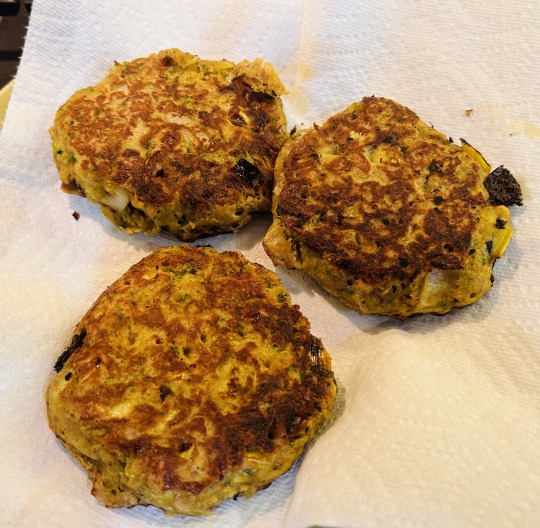

On the sweeter side of things, the Israeli national obsession with Sufganiyot (traditionally jelly and nowadays extremely sinful) is definitely rooted in the diaspora. Almost each Sephardic and Mizrachi community makes its own variation of a sugary fritter using the spices common in their country of origin. In India, for example, Jews celebrate Hanukkah with Gulab Jamun- also a popular street food- that is yogurt based and often flavored with cardamom and rose water.
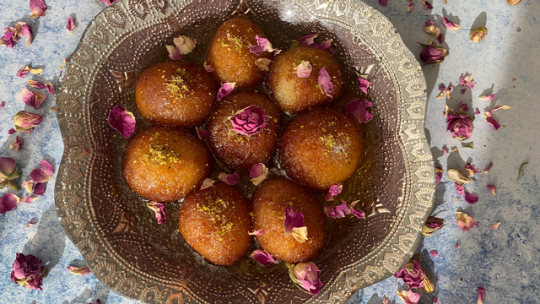
In Greece, Turkey and the Balkans, Jews made Bimuelos often scented with orange blossom, dipped in honey syrup and fried in olive oil. The Iraqi-Syrian’s Zengoula is closer in texture and shape to an American funnel cake.

Last but certainly not least- is the Sfenj- the ultimate North African competitor to the Ashkenazi Sufganiyot. Similar to its French cousin the beignet, Sfenj is simply pastry dough randomly shaped and coated with powdered sugar. It’s extra delicious when eaten fresh off the frying pan.

Ditch the Deep Fryer for Ricotta Pancakes
If frying is not your thing, rest assured that Hanukkah is also celebrated with dairy. Apparently, the miracle of the everlasting oil in the temple and the bravery of the Maccabees is not the only Hanukkah story. In fact, many Sephardic communities honor the heroic act of Judith - Yehudit. According to the Book of Yehudit and Talmudic tales, Judith lured into her home the Syrian Greek General Holofernes, who was attempting to besiege the city of Bethulia. She offered him salty cheese and wine. Once sedated, she killed him and displayed his corpse at the city gates. Seeing what had been done to their commander- terrified the soldiers, and they fled immediately. The liberation of Bethulia raised morale among the tired Maccabee fighters, and helped bring victory one step closer.

'Judith and Holofernes,' 1605, by Jan de Bray.
The crucial role of cheese in the story of Judith gave reason for certain cultures to celebrate Hanukkah with a variety of dairy dishes. A particularly decadent one is the Ataiyef- the Syrian answer to mundane breakfast pancakes. These are stuffed with ricotta cheese, dipped in rose water syrup, sprinkled with pistachio pieces and deep fried, in honor of Hanukkah of course.
A similar and more attainable recipe is the Roman-Jewish Cassola. This simple gluten-free sweet ricotta pancake is perfect for a weekend breakfast on Hanukkah and throughout the year.
Cassola (adapted from Claudia’s Roden Book of Jewish Food)
-1 lb (500 g) ricotta
-1 cup sugar (recipe calls for 200 gram I reduced to 170, and it was still a little too sweet)
-5 eggs
-2 tbsp oil (I subbed for 1 tbsp butter)
-Grated rind of 1 lemon (optional but adds significantly)
-Blend the ricotta and sugar with the eggs in a food processor.
-Heat oil/ butter in a large ovenproof pan.
-Pour mixture into the pan and cook on medium-low flame until the bottom has set firmly.
-Put under the broiler and let it brown for a couple of minutes.
I served it with cherries and berries and a spoonful of homemade granola. No syrup needed!
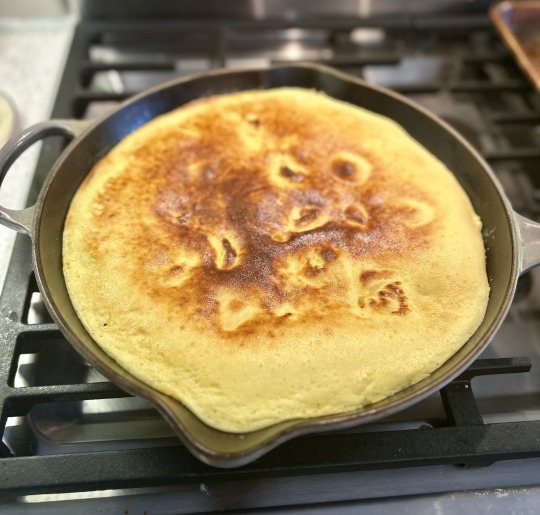

A Women’s Fest
The story of Judith inspired several Jewish communities to add other customs in addition to the dairy feast. In North Africa, the sixth (and sometimes seventh) night of Hanukkah was known as Chag Ha’Banot - (Eid Al Bana', in Judeo-Arabic), or The Festival of Daughters. During this night, women went to synagogue to pray for the health of elderly women in their community, and to ask for a good match for their single daughters. They lit the Menorah recalling remarkable Jewish heroines, such as Judith and many others. The praying sometimes turned into a lively party featuring singing, dancing and drinking wine.

The feast usually included dairy foods, followed by several desserts, such as sweet couscous with chopped nuts and dried fruit.
This ritual is representative of the endless number of mini traditions existing in the Sephardic-Mizrachi world around Hanukkah. To that point, I am sharing one last non-food tradition- the extra candle. Ladino speaking communities and in Aleppo, Syria, had the custom to light an extra candle each night of the holiday in honor of their ancestors, who were exiled during the Spanish expulsion of 1492. A popular song that accompanied the candle lighting was Ocho Kandelikas (8 little lights in Ladino). Enjoy listening!
youtube
#sephardic
#Hanukkah
2 notes
·
View notes
Text
A Flavorful Showdown: Top-Rated Indian Veg vs. Non-Veg Dishes In Calgary

India's culinary heritage features a wide range of diverse flavours and traditions, offering an extensive range of authentic and mouthwatering delicacies. This rich tapestry has enticed palates from around the globe, sparking a shared fondness for Indian cuisine, whether vegetarian or non-vegetarian. People from all across the world have started growing a liking for Indian dishes in both veg and non–veg. However, some people prefer the former and vice versa. This notion has led to a great debate among people-what are better veg dishes or non-veg dishes? Both these Indian dishes have their special quality both are equally appealing in taste and preparation method, authenticity, and culinary history.
However, this culinary mystery is often the stem of lively debates among various food enthusiasts, giving rise to questions like “Which is better? Veg or non-veg?”. So we decided to clear your confusion and shed some light on some of the most delicious vegetarian and non-vegetarian dishes in Clagary and the best place to eat in the region.
The Art Behind Indian Vegetarian And Non-vegetarian Dishes
Traditional Indian cuisine features its charm through a blend of diverse cultures, distinct flavours, and the generous use of a wide variety of herbs and spices. Each region in India offers a wealth of delicious and unique dishes enjoyed by people globally. The category of Indian food includes both vegetarian and non-vegetarian delights, and the diversity within these categories is truly mind-blowing. Both these culinary creations make use of fresh ingredients, with vegetarian dishes featuring vegetables, legumes, grains, and dairy, while non-vegetarian options feature meats, poultry, and seafood. The excellence and freshness of these ingredients ensure the crafting of the desired flavours that define Indian cuisine. The cooking techniques employed in both categories vary. Veg dishes often involve sautéing, simmering, or roasting, while non-veg dishes may include grilling, marinating, and slow cooking. The methods used play a significant role in infusing flavours into the dishes.
Both veg and non-veg dishes offer a balance of flavours. This balance involves getting the right amount of sweetness, saltiness, sourness, bitterness, and umami, depending on the type of dish.
Top 5 Indian Vegetarian Dishes You Must Try
For our vegetarian enthusiasts, we've thoughtfully prepared a selection of the most cherished items from the Indian vegetable menu. These dishes are not only a delight for vegetarians but are also enjoyed by those who appreciate both vegetarian and non-vegetarian fare. Take a moment to explore these flavorful options.
Aloo Gobhi
Aloo Gobhi is one of the most beloved dishes in the Indian cuisine. This lip-smacking vegetarian dish features tender florets of cauliflower and sliced potatoes cooked in a delicious blend of Indian spices including turmeric, cumin, and coriander, which infuse the vegetables with a rich, earthy aroma.
Aloo Gobi strikes the perfect balance between soft and slightly crisp textures, making it a favourite comfort food in Indian households. It is often garnished with fresh cilantro and served alongside fluffy naan bread or steamed rice.
2.Palak Paneer
This vegetarian dish has grown fans from all across the world. The healthy Palak Paneer features cubes of paneer (Indian cheese) and Palak (spinach) in aromatic Indian spices and herbs. The spinach leaves are blended into a fine paste that gives out a vibrant green hue. This green sauce of spinach is sauteed and stir-fried in a pan and then paneer cubes are added to it. The spices used, such as cumin, garam masala, and coriander, infuse the dish with a mild, earthy warmth. Palak Paneer is not only a feast for the taste buds but also a healthy choice, as spinach is packed with nutrients and vitamins.
3. Mutter Paneer
Another classical Indian vegetarian dish, the delicious Mutter Paneer features Mutter (green peas) and Paneer (Indian cheese). The dish is prepared by sautéing paneer cubes in a rich tomato-based gravy, which is infused with a medley of aromatic spices such as cumin, coriander, and garam masala. The addition of green peas adds a sweet and earthy element to the dish.
Mutter Paneer is a popular choice among vegetarians and often finds its place on restaurant menus and dinner tables across India and beyond.
4.Channa Masala
Probably one of the best authentic Indian food in Calgary, the Channa Masala is also known as Cholle Masala. Channa (chickpeas) are simmered in a spiced onion and tomato-based gravy. The preparation starts with a blend of fragrant spices, such as cumin, turmeric, red chilli powder, coriander, and garam masala, which are used to create a thick and fragrant gravy. The chickpeas are then added to this gravy, absorbing the flavours and creating a delicious, protein-rich dish.
Channa Masala is known for its diverse, spicy flavours, and it's often topped with fresh coriander leaves and served with naan, roti, or rice.
5. Sweet And Sour Eggplant
Sweet & Sour Eggplant is a dish that features the unique flavours of sweet and tangy in a vegetarian delight. This dish features slices of eggplant, which are coated in a light batter and then fried until they achieve a crispy, golden-brown texture.
The "sweet and sour" flavour comes from the sauce which includes ingredients such as vinegar, sugar, and soy sauce. This sauce is infused with a blend of flavours, ranging from the sweetness of sugar to the tanginess of vinegar. It creates a contrast to the crispy eggplant, resulting in a saucy and slightly sweet coating that complements the eggplant's mild flavour.
Top 5 Non-Vegetarian Dishes You Must Try
No need to fret, dear non-vegetarian food enthusiasts! We've put together an enticing culinary collection of some of the finest Indian non-vegetarian dishes that are sure to leave you craving for more. Without further ado, here they are:
Tandoori Chicken
Your mouth starts watering thinking of this dish! Doesn’t it? undoubtedly, tandoori chicken has rightfully earned its reputation as one of the most beloved Indian non-vegetarian dishes. This dish features tender and juicy pieces of chicken, marinated in a blend of yoghurt and fragrant Indian spices and herbs.
The marinated chicken is then cooked in a tandoor (clay oven) that infuses a smoky and charred flavour to the meat. Tandoori Chicken is known for its bold and smoky flavours, with the yoghurt-based marinade adding a creamy and tangy element.
2. Chicken Tikka Masala
Chicken Tikka Masala is a much-loved Indian non-vegetarian dish that has achieved international credit for its rich flavours. This dish consists of juicy pieces of chicken, usually marinated in a spiced yoghurt blend imparted with ingredients like cumin, coriander, and garam masala. The marinated chicken is then roasted, grilled, or baked to perfection. It is traditionally served in a tangy tomato-based gravy topped with cream and spices, including cumin, paprika, and fenugreek.
3. Lamb Vindaloo
Lamb Vindaloo is a spicy Indian curry known for its spicy flavours and tender pieces of lamb. This dish originates from the Goan region of India and portrays the influence of Portuguese cuisine. The lamb is marinated in a mixture of spices such as cumin, coriander, turmeric, and red chillies, along with vinegar or tamarind, which provides the dish with a tangy kick. The marinated lamb is slow-cooked in a tomato-based gravy, creating a rich sauce.
4. Prawn Malai Curry
Prawn Malai curry is a deliciously creamy seafood dish that originates from the coastal region of India. This dish is prepared by taking plump prawns marinated in a blend of aromatic herbs and spices including turmeric, cumin, and coriander, which impart a subtle and aromatic warmth to the curry.
5. Chicken Biryani
Another popular Indian dish is the delectable non-vegetarian rice dish popularly known as Chicken Biryani. The preparation begins with marinating the chicken in a blend of spices, including cumin, coriander, and garam masala. The marinated chicken is then layered with partially cooked rice in a heavy-bottomed pot. This pot is then sealed to trap the steam and allow the ingredients to cook together, infusing the rice with the rich flavours of the chicken and spices.
Where to Find the Best Indian Food In Calgary?
Calgary is home to some of the best restaurants to eat in the region. You can easily order Indian food online or dine in according to your mood and preference. If you’re planning to try some of the most amazing dishes in the area, we suggest you try Gate of India, an East Indian restaurant that specialises in serving traditional Indian food from various regions in the country. Their preparation method is very hygienic and they strongly believe in sourcing their ingredients from local vendors.
The usage of authentic Indian herbs and spices makes their dishes all the more special. You can order Indian food online from this restaurant or dine in as per your choice and taste tradition like never before.
2 notes
·
View notes